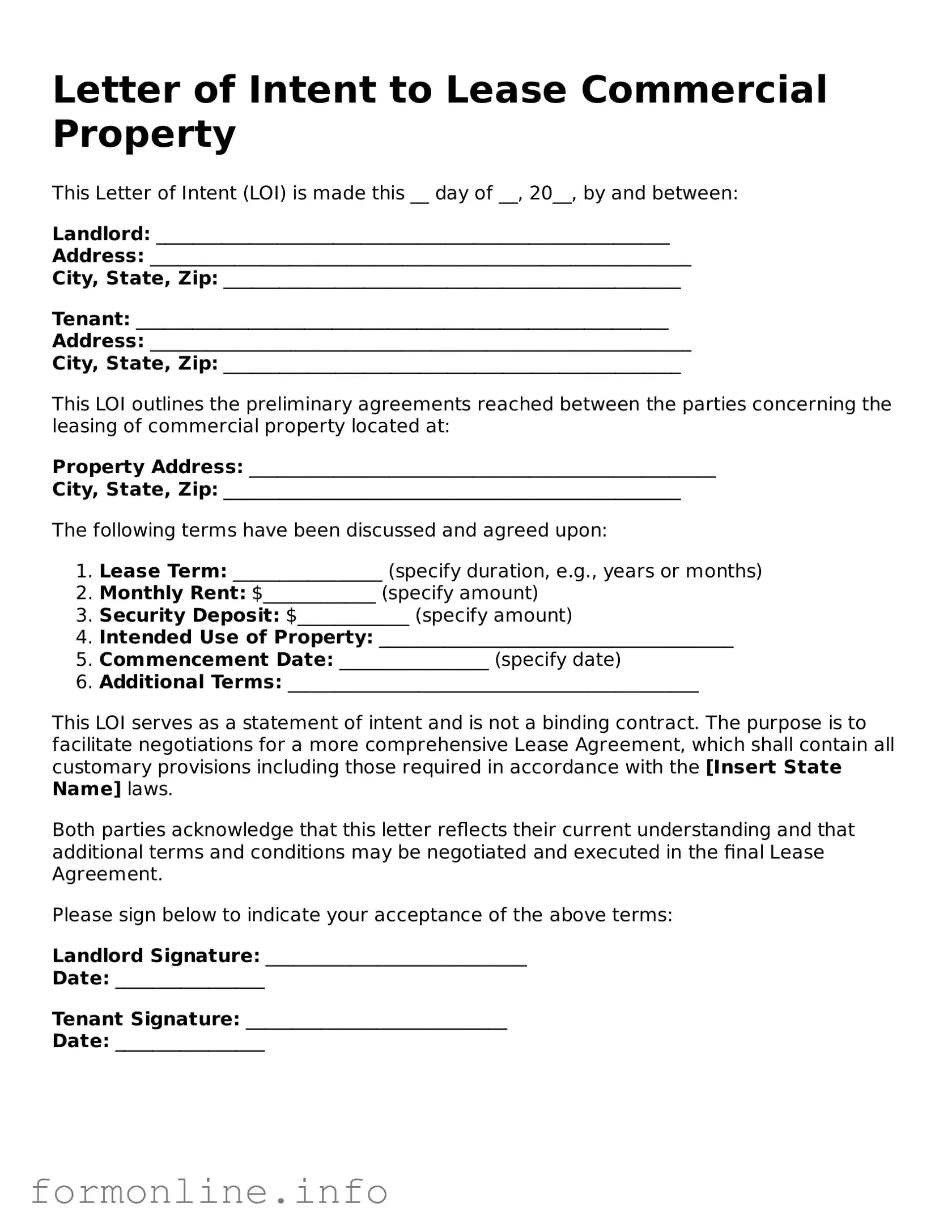Letter of Intent to Lease Commercial Property
This Letter of Intent (LOI) is made this __ day of __, 20__, by and between:
Landlord: _______________________________________________________
Address: __________________________________________________________
City, State, Zip: _________________________________________________
Tenant: _________________________________________________________
Address: __________________________________________________________
City, State, Zip: _________________________________________________
This LOI outlines the preliminary agreements reached between the parties concerning the leasing of commercial property located at:
Property Address: __________________________________________________
City, State, Zip: _________________________________________________
The following terms have been discussed and agreed upon:
- Lease Term: ________________ (specify duration, e.g., years or months)
- Monthly Rent: $____________ (specify amount)
- Security Deposit: $____________ (specify amount)
- Intended Use of Property: ______________________________________
- Commencement Date: ________________ (specify date)
- Additional Terms: ____________________________________________
This LOI serves as a statement of intent and is not a binding contract. The purpose is to facilitate negotiations for a more comprehensive Lease Agreement, which shall contain all customary provisions including those required in accordance with the [Insert State Name] laws.
Both parties acknowledge that this letter reflects their current understanding and that additional terms and conditions may be negotiated and executed in the final Lease Agreement.
Please sign below to indicate your acceptance of the above terms:
Landlord Signature: ____________________________
Date: ________________
Tenant Signature: ____________________________
Date: ________________
